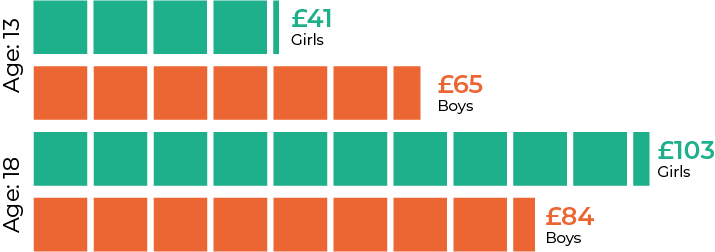Insights into the lives of children and young people
19 Aug 2019 03:20 PM
Shortly we are going to be publishing regular insights into the views and experiences of children in England. As a taster, this blog looks at 3 recent studies that provide interesting insights about the lives and views of children.
Worries
Surveys and discussion groups by Action for Children and YouGov of 5,000 UK children aged 11-18, and adults from three generations (of which 2082 were children) shows that 91% of children are worrying about what would be considered ‘adult issues’.
This included 50% worrying about poverty and homelessness; 49% about terrorism; 48% about the environment; 41% about inequality (e.g. sexism, racism) and 38% about Brexit. Children’s biggest worries were being bullied (61%), both online and offline, inside and outside of school, and also pressure at school (60%). As Kidscape reports – in a survey involving 500 children who will start secondary school in September – 40% of children are anxious about the move to secondary school. Their biggest worries include being bullied and not being able to make friends. Only one in ten children feel confident about their move to secondary school.

Whilst being increasingly concerned about the world around them, a recent survey by Beano of 2000 children and their parents showed that 1 in 5 children aged 5-9 have attended their first march or protest, while 3 in 4 agree that it is important to speak up for causes they believe in.
When asked by Action for Children and YouGov what they would like to be different, 58% of children said they would like safer streets/lower risk of crime (e.g. knife crime, gang related crime etc.); 55% said less pressure from school; 50% said less pressure around physical appearance; 48% said more opportunities to get a job; 38% said less pressure to fit in with friends and 36% said more free time to themselves where they don’t have to do anything in particular.
Adults were more concerned about screen time than children. Parents and grandparents underestimated children’s fears about being a victim of crime, such as knife crime or terrorism, and the state of their mental health.
Back to basics
Research by Beano Studios including a UK-wide survey of 2,000 Generation Alpha children – children born since 2010 – and their parents, shows that children up to the age of nine are the ‘new old-fashioneds’. Despite mastering the digital world, they like to play and they value family time. 98% of children play outside and 72% are climbing trees. 48% of Generation Alpha children often spend time away from devices and tech; 42% of them enjoy crafting activities including knitting and crochet.
40% of 6-14 year olds felt that they are responsible for saving our planet
Generation Alpha children are also ‘post stereotypes’ with 58% of children agreeing that their gender does not matter, compared to 33% of their parents; and previous research by Beano for Brands showed that 40% of 6-14 year olds felt that they are responsible for saving our planet. Toy trends are in line with this awareness. As Hookresearch reports, big toymakers are starting to pay attention to the climate impact of their toys; and there are movements to create more inclusive and diverse toys with more gender, racial and disability representation.
Gender pay gap
Figures were collected from 75,000 children from Generation Z (born after 1998) by the Consumer Data Research Centre at the University College London, based on GoHenry Youth Economy Report data. Collectively, in 2018, children in the UK earned £4.5 billion, which is an average of £39 per week. Children make the most money by walking the dog (£1.50); tidying their room (£1.40); vacuum cleaning (£1.35); doing their homework (£1.30) and take out the rubbish and wash the dishes (£1.05).
Children in Islington, London, earn the most, with an annual average income of £677, while children in Wales earn the least – £434 a year on average. But Welsh children are also the UK’s biggest savers, putting away 14% of their income. Up to the age of 16, boys save more than girls, with the saving gap between boys and girls peaking at the age of 13. Boys save an average of £65 a year at that age, compared to girls saving £41. From the age of 17, girls save more, putting aside an average of £103 a year by the time they are 18. Boys save £84 a year at the age of 18.
Average savings between boys and girls

The report also notes that there is already a gender pay gap for pocket money. Boys aged eight to 15 in the UK earn on average £20 more in pocket money per year compared to girls in the same age range. Girls start off as the highest earners at the age of six, but are quickly overtaken by boys, with the gap peaking at the age of 11. At that age, girls earn an average of £371 per year compared to £404 a year among boys.
Sweets and magazines from local shops tend to be the main spend for younger girls, but they spend more of their income on fashion by the time they are 11. And when their social life becomes more important, they spend more money in restaurants and cafes. Similar to girls, up to the age of 10, boys mostly spend on sweets and magazines. Between the ages of 11 and 15, they spend most their money on gaming, and between 16 and 18 also in cafes and restaurants.